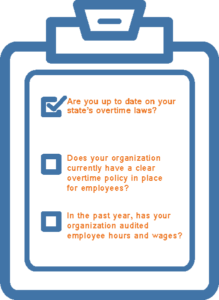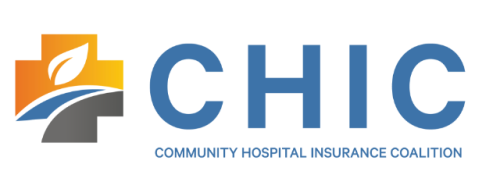Contents
The Final White Collar Exemption Rule is Here: Now What?
FLSA Overtime Rule Risk Scorecard
ACA Reporting Update: AIR System Will Remain Up and Running After June 30th Deadline
Did you know? EEOC Finalizes Wellness Rule Under ADA and GINA
The Final White Collar Exemption Rule is Here: Now What?
The Department of Labor (DOL) announced the final rule on changes to the “white collar” exemptions under the Fair Labor Standards Act (FLSA) on May 18, 2016. The final rule is effective Dec. 1, 2016.
To qualify for certain white collar exemptions, an employee must meet a salary basis test, a salary level test and a duties test. An employee must meet all three tests in order to be exempt from FLSA minimum wage or overtime pay requirements.
The final rule only changes the minimum salary threshold required in order to satisfy the administrative, executive and professional employee exemptions. The final rule also increases the salary threshold for highly compensated employees. The final rule does not make any changes to the primary duties test under the white collar exemptions. In addition, the final rule does not make any changes to the other various FLSA exemptions.

Effective Dec. 1, 2016, the minimum salary level an employee must be paid under the administrative, executive or professional exemption is $47,476 annually ($913 per week). In addition, the minimum salary level is going to be automatically adjusted every three years.
The first step many employers must take is to evaluate the positions that may be affected by the final rule and determine whether or not these positions would require a salary increase to maintain the exemption.
Employers may choose to reclassify employees who are making below $47,476 to nonexempt (rather than increasing salaries). This classification change may have rippling effects on the employee, beyond the method in which they are paid. For example, the classification change might make some employees ineligible for certain benefits. Employers might also have to limit remote work and flexible scheduling.
Conversely, an employer that chooses to increase employee salaries should be cognizant of potential wage compression issues.
There are many other issues to examine when determining how to address changes required due to the final rule. Each employer’s response will be different depending on its specific circumstances. Some employers may need to make limited changes, if any at all. Others may need to consider a complete revamp of current pay policies, pay grades and worker classifications.
Employers that are facing likely reclassification of employees should prepare an effective communication plan. Many employees will view the loss of exempt level status as a demotion. This will be especially true if the classification change removes other perks or benefits that the employee is accustomed to.
FLSA Overtime Rule Risk Scorecard
Click here to down load the scorecard. Answer the questions to determine whether your organization is at risk for increased costs, fines and lawsuits. Each response will be assigned a numerical value depending on your answer. At the end, view your total score to determine your organization’s risk given the new FLSA overtime room.
A low score does not mean that your organization is necessarily in compliance. This tool simply makes a general estimate of risk. Contact us for additional risk mitigation strategies.
ACA Reporting Update: AIR System Will Remain Up and Running After June 30th Deadline
While the deadline to electronically file Affordable Care Act (ACA) information returns with the IRS passed on June 30, 2016, the ACA Information Returns (AIR) system used to electronically file those returns will remain up and running. 
On June 30th, the IRS noted the following on its AIR system home page:
- The AIR system will continue to accept information returns filed after June 30, 2016. In addition, employers can still complete required system testing after June 30, 2016.
- When a filing is “accepted with errors,” the employer has 60 days to submit a replacement before penalties accrue any further. For example, employers who filed their 1094-C by June 30th and who submit a replacement within 60 days of June 30th will have the submission treated as timely filed.
- Employers that were unable to submit their returns by June 30th should still file their returns after the deadline. Filers that missed the June 30, 2016 deadline will generally not be assessed late filing penalties if the employer made legitimate efforts to register with the AIR system and to file its information returns, and it continues to make such efforts and completes the process as soon as possible.
Additionally, while there is no specific relief provided in the case of employers that fail to file returns by the deadline, relief may be available if the IRS determines that there was reasonable cause for the delay.
Employers that did not file electronically and that missed the May 31, 2016, paper filing deadline should also complete the filing of their paper returns as soon as possible.
© 2016 Marathas Barrow Weatherhead Lent LLP. All Rights Reserved.
On June 2, 2016, the Equal Employment Opportunity Commission (EEOC) announced an increase to the maximum penalty for employers that fail to comply with federal notice-posting requirements. The maximum penalty will increase from $210 to $525.
Employers with 15 or more employees are covered under Title VII of the Civil Rights Act of 1964, the Americans with Disabilities Act (ADA) and the Genetic Information Nondiscrimination Act (GINA), and must comply with the posting requirements under these acts to avoid penalties.




